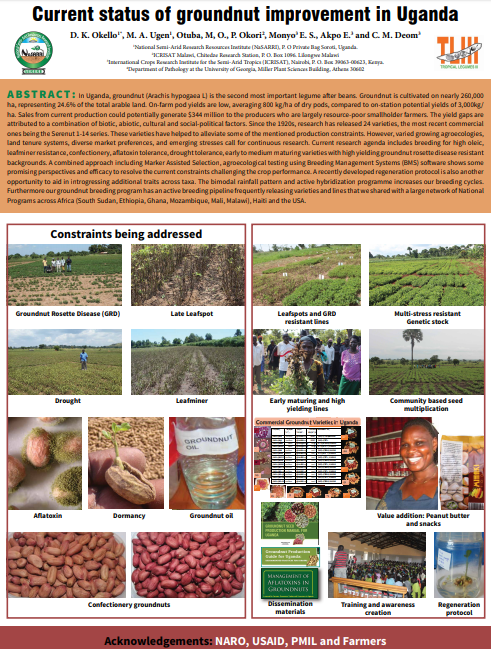Current status of groundnut improvement in Uganda
Summary
In Uganda, groundnut (Arachis hypogaea L.) is the second-most important legume after beans. Groundnut is cultivated on nearly 260,000 ha, representing 24.6% of the total arable land. On-farm pod yields are low, averaging 800 kg/ha of dry pods, compared to on-station potential yields of 3,000kg/ha. Sales from current production could potentially generate USD 344 million for producers, who are largely small-scale farmers. The yield gaps are attributed to a combination of biotic, abiotic, cultural, and political factors. Since the 1920s, research efforts have released 24 varieties, the most recent commercial varieties being the Serenut 1–14 series. These varieties have overcome some of the production constraints mentioned. However, varied growing agro-ecologies, land tenure systems, diverse market preferences, and emerging stresses call for continuous research. The current research agenda includes breeding for high oleic, leafminer resistance, confectionery, aflatoxin tolerance, drought tolerance, early- to medium-maturing varieties, high-yielding varieties, and rosette disease-resistant varieties. The authors of this poster have initiated marker-assisted selection for high oleic breeding and adopted BMS for digitalization of data capture, management, analyses, and storage. A recently developed regeneration protocol will aid in introgressing additional traits across taxa. The bimodal rainfall pattern and active hybridization program increases breeding cycles. To date, the groundnut breeding program has an active breeding pipeline, frequently releasing varieties and lines which have already been shared with national programs across Africa, Haiti, and the USA, with many additional national programs making requests. The authors of this poster have strong partnerships in research and development among the African countries, and with USAID, ICRISAT, and BMGF.
Open resource Download resource

